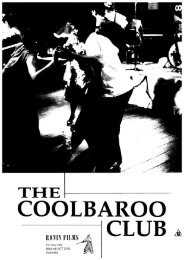to download BETELNUT BISNIS study guide - Ronin Films
to download BETELNUT BISNIS study guide - Ronin Films
to download BETELNUT BISNIS study guide - Ronin Films
You also want an ePaper? Increase the reach of your titles
YUMPU automatically turns print PDFs into web optimized ePapers that Google loves.
cannot grow their own food and the<br />
only water is distant and dirty.<br />
Kaima has known Chris Owen since<br />
2002. As a willing and skilled bush carpenter<br />
he worked with Chris, but apart<br />
from other casual labouring and taking<br />
the night shift as a security guard for<br />
the compound where Chris lives, he<br />
has no regular income.<br />
As he, his wife and members of his<br />
family are betelnut chewers, they need<br />
cash above the basic amount needed<br />
<strong>to</strong> pay for food. Also, they want money<br />
for school fees and emergencies. In Papua<br />
New Guinea there is no free education<br />
and almost no welfare system.<br />
Without pensions or unemployment<br />
benefits, people simply have <strong>to</strong> look<br />
after themselves. Many look <strong>to</strong> bisnis, a<br />
Tok Pisin (Papua New Guinean pidgin)<br />
expression taken from the English word<br />
‘business’, but having a wider meaning<br />
<strong>to</strong> include most money making ventures.<br />
Lukas long considers whether<br />
he might try his luck in the betelnut<br />
bisnis, and when he has some money<br />
he decides <strong>to</strong> risk it buying betelnut.<br />
He goes <strong>to</strong> Lae in the small buses on<br />
which the drivers yodel their destination<br />
<strong>to</strong> collect passengers, buys betelnut in<br />
the market, and returns, hopeful that he<br />
will make money.<br />
But after his wife has sold it, there is<br />
no profit. Lukas tries again by going <strong>to</strong><br />
Madang, but again there is no success.<br />
The betelnut bisnis requires a detailed<br />
knowledge of which sort of nuts<br />
people like <strong>to</strong> chew and the seasonal<br />
variations in prices. Also, Lukas is only<br />
bringing back one bag of betelnut, and<br />
he has <strong>to</strong> cover the cost of his bus fare<br />
and loss of the betelnut that he eats, or<br />
gives away <strong>to</strong> friends, or sells on credit.<br />
Lukas remains dependent on his uncertain<br />
income from labouring and working<br />
as a security guard.<br />
Jane Tamas is another significant<br />
person in the film and like Chris, she<br />
is a participant in both the events and<br />
the filming of them. A researcher and<br />
production assistant on the film, Jane<br />
is a young woman from the coast. She<br />
appears neatly dressed and competent,<br />
but we learn that she has had<br />
only five years of primary schooling<br />
and knows that she has <strong>to</strong> improve<br />
her education if she is <strong>to</strong> get on in life.<br />
But <strong>to</strong> do that she needs extra money.<br />
She teams up with Lukas’ wife <strong>to</strong> go<br />
The Highlands<br />
In the centre of Papua New Guinea there are five highland provinces:<br />
Eastern Highlands, Chimbu, Western Highlands, Enga and Southern<br />
Highlands. The highest peak, Mt Wilhelm, is 4500 metres (Mt Kosciuszko<br />
is 2230). When Europeans first tried <strong>to</strong> travel inland they were confronted<br />
by dense vegetation and harsh terrain. Ahead they could see more <strong>to</strong>wering<br />
peaks and they thought that the centre of the island of New Guinea<br />
was extremely mountainous and few people lived there. It was not until<br />
the 1920s and 1930s that European missionaries, gold prospec<strong>to</strong>rs and<br />
missionaries learnt that between the ranges were high, fertile valleys and<br />
dense populations. Nearly half the population of Papua New Guinea live in<br />
the Highlands.<br />
In the 1930s Australian government officers began bringing the Highlanders<br />
under central government administration. No battles of the Second<br />
World War reached the Highlands and many Highlanders scarcely knew<br />
that a world war was being fought in New Guinea. It was not until the<br />
1950s that government authority reached thousands of Highlanders.<br />
Many had only twenty years of Australian administration.<br />
An enterprising people, the Highlanders were soon leaving their villages<br />
(or scattered hamlets as many Highlanders did not live in concentrated<br />
villages) and trying <strong>to</strong> find work in the <strong>to</strong>wns and the plantations on the<br />
coast. This movement was assisted by the government sponsored Highlands<br />
Labour Scheme under which men contracted <strong>to</strong> work on plantations<br />
on the coast and in the islands. Lukas’ father was one who left home <strong>to</strong><br />
work on a coastal plantation.<br />
The longest and most important roads in Papua New Guinea connect the<br />
Highlands with Lae and Madang. While 85% of Papua New Guineans live<br />
in rural communities, many people, including thousands of Highlanders,<br />
live in the <strong>to</strong>wns.<br />
ISSUE 36 SCREEN EDUCATION<br />
3



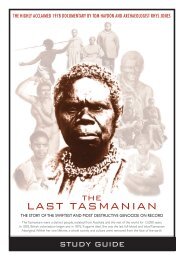

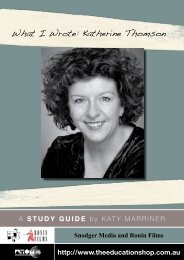
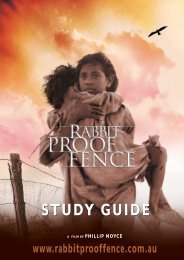

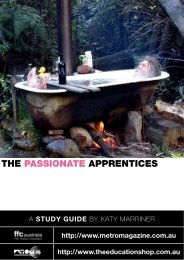
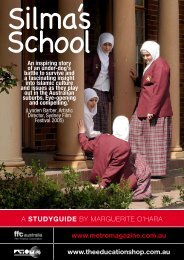
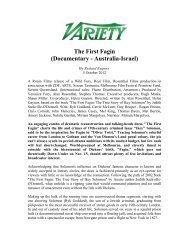

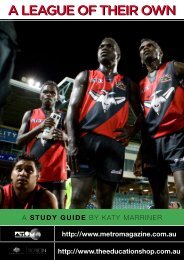
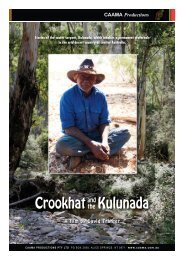
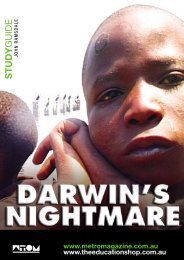
![to download FROHE OSTERN! [HAPPY EASTER!] - Ronin Films](https://img.yumpu.com/33740736/1/184x260/to-download-frohe-ostern-happy-easter-ronin-films.jpg?quality=85)
